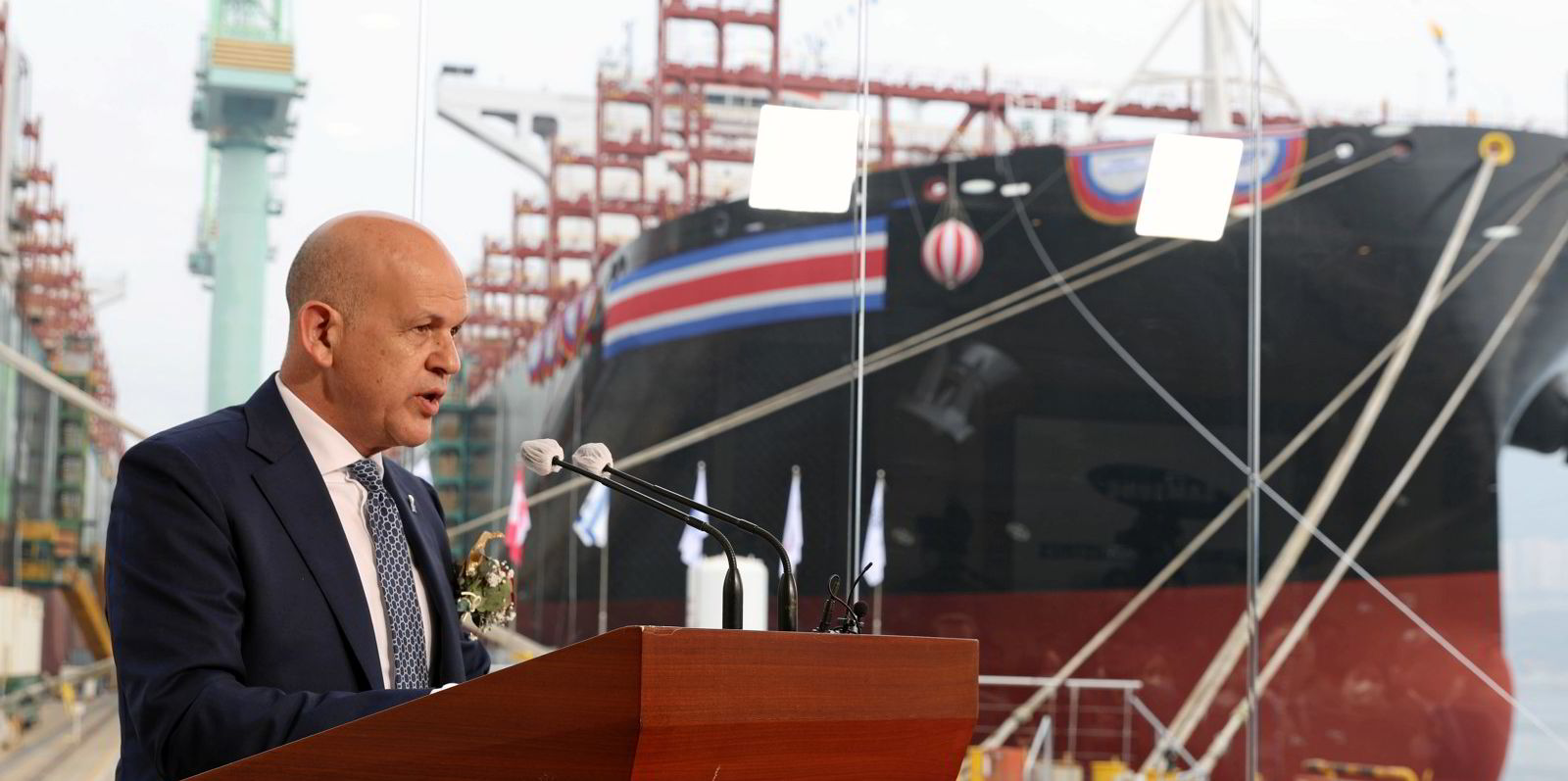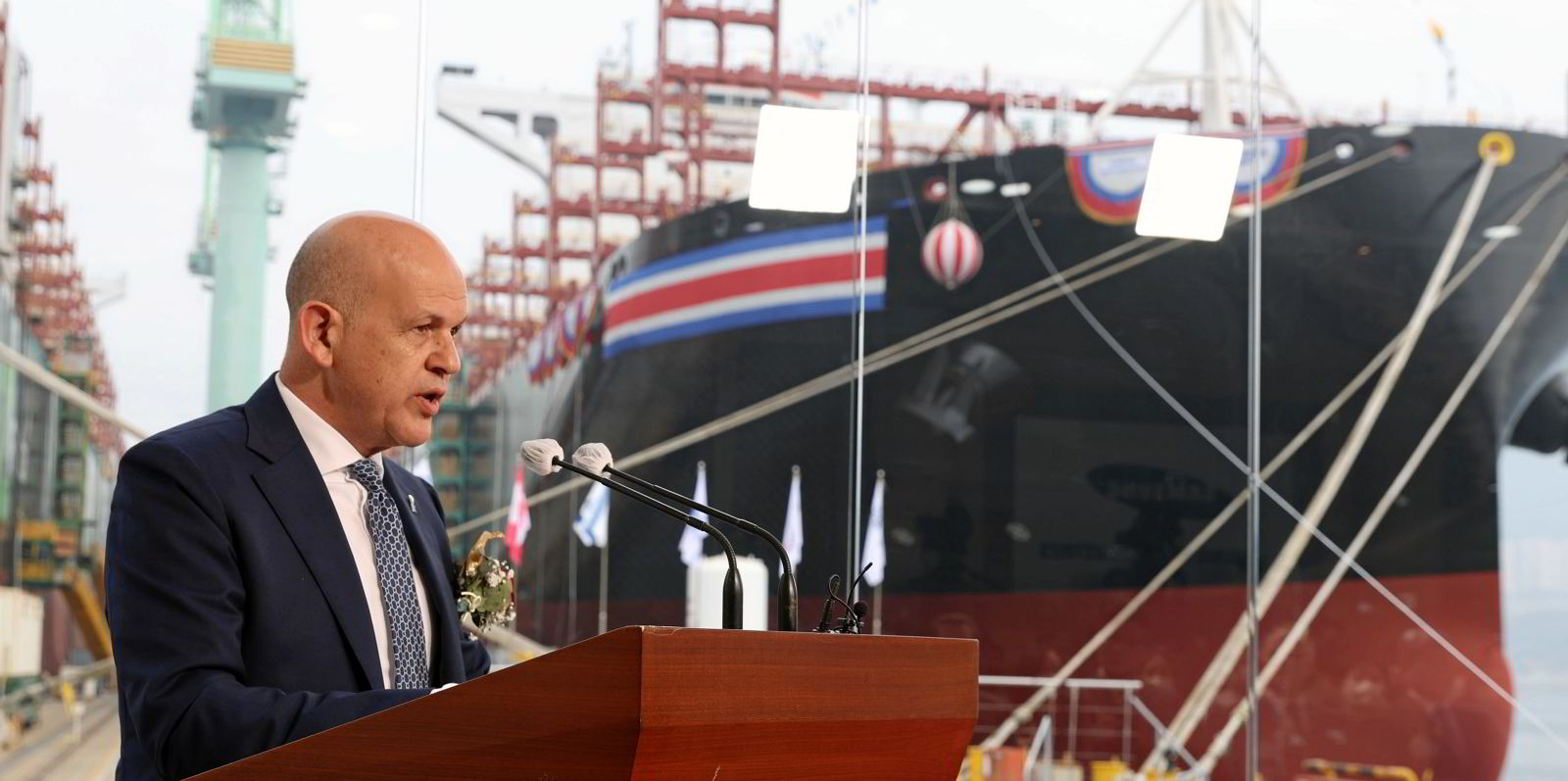Zim management believes much of the liner industry is loss-making because spot freight rates are unsustainable and will have to improve.
That is why managers of the New York-listed carrier are sticking by their forecast of a return to profitability in the second half of the year.
Speaking to TradeWinds after the Israeli liner operator’s first loss in 11 quarters, Zim president Eli Glickman said no one in the Haifa-based company is panicking.
“We’ll do our best to change direction soon. We believe in our strategic plans,” he said.
Glickman believes new vessels, lines and digital investments will be the differentiator and return a leader in Ebit margin.
That conviction is borne out by the belief that the freight market cannot continue in the same vein that saw Zim report a net loss of $58m in the first quarter.
The downturn in rates was largely down to falls in the transpacific trade lanes.
Zim chief financial officer Xavier Destriau believes this is a situation that has to turn around in the coming months.
Container volumes are there, at least for the trade from Asia to the US east coast.
And that is where the liner company is planning to deploy its 15,000-teu LNG-fuelled container vessels that are now being delivered.
Draught limitations imposed this week for vessels sailing through the Panama Canal have required Zim to be “inventive”.
The liner has been taking measures to ensure it can carry light cargo so vessels can go through the canal.
Guidance
But so far, utilisation of vessels to the US east coast remains high.
“We are not happy with the rates, but from the volume perspective we are fine,” Destriau said.
He added that the drop in volumes and rates had been mainly in the US west coast, especially to the Pacific Northwest. But that, too, has to change.
“We think that in most of the current east-west trade lanes, the spot rates are not sustainable in the longer term,” he said.
Zim has maintained earnings guidance of $1.8bn to $2.2bn of adjusted Ebitda for 2023, against the expectations of some forecasters.
Destriau argues rates have bottomed out and that the destocking of inventories that have hit US cargoes will end at some point.
That is likely to be in the third quarter, which is traditionally the peak season for liners.
The company also considers itself well-positioned to compete because the larger modern vessels are cheaper to operate than the ships they will replace.
But Destriau questions the impact on the industry as a whole, which is facing higher costs
“We think that most of the industry might end up being loss-making in some of those trade lanes,” he said.
Curse or blessing?
A stronger freight market is important for Zim, which is nearly wholly exposed to the spot market.
Destriau said some freight contracts have not been finalised because expectations by shippers “are below where we are willing to go”.
“We do not intend to lock ourselves in on revenues that would be loss-making cargo for us,” he said.
“If revenues stay where they are now, at a level close to 2018 and 2019, it’s bound to happen that most of the shipping industry will end up losing money.”
“It has happened in the past,” Destriau added, although liner companies were not as cash rich as they are today.
“Now the big question is, the industry today is cash rich — so is it a curse, or it a blessing? Time will tell.”





